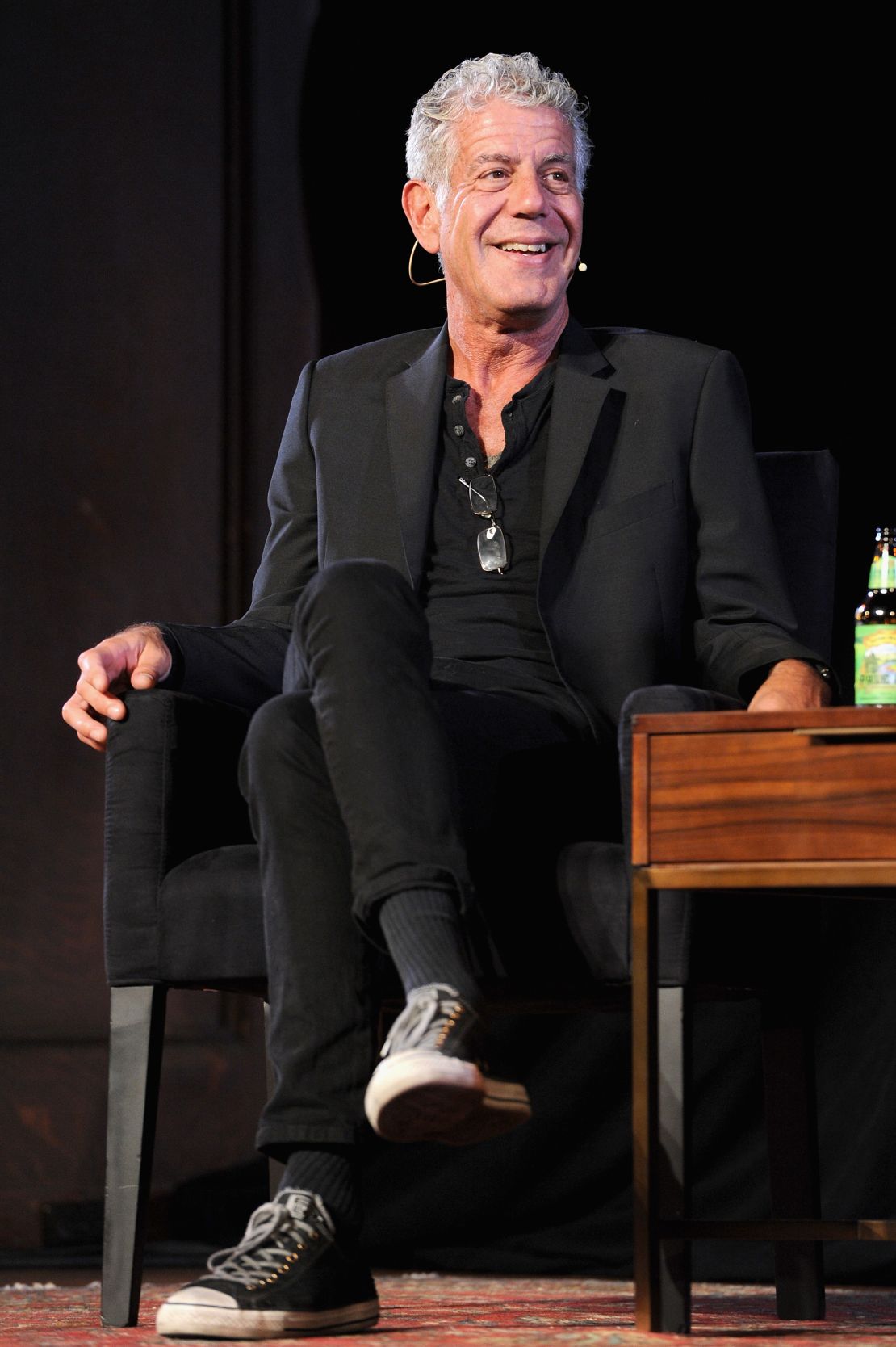Editor’s Note: Holly Thomas is a writer and editor based in London. She tweets @HolstaT. The opinions expressed in this commentary are solely those of the author. View more opinion articles on CNN.
A Whitney Houston hologram concert is coming to Vegas. This October, “An Evening With Whitney” will begin its residency at Harrah’s Las Vegas, featuring the virtual image and voice of the late singer, backed by a live band, singers and dancers. According to Variety, this event has been in the works since Houston’s estate partnered with publishing/management company Primary Wave and includes additional plans for an album of unreleased tracks and a musical.

The show follows a similar format to a planned Amy Winehouse hologram tour. According to Base Hologram, the company developing the tour, this is currently postponed due to the “unique challenges and sensitivities” inherent in “remembering Amy Winehouse and her legacy in the most celebratory and respectful way possible.” It seems bizarre that the Whitney show is going ahead, when such “sensitivities” undoubtedly apply to her too.
The ethics of using technology to memorialize celebrities spurred a recent debate after director Morgan Neville used artificial intelligence to create a model of Anthony Bourdain’s voice for 45 seconds of narration in the documentary “Roadrunner” (produced by CNN Films) about his life and 2018 death by suicide. Many fans were disgusted by the use of AI to turn lines from Bourdain’s writing into soundbites in his voice. “In the end I understood this technique was boundary-pushing,” Neville said. “But isn’t that Bourdain?”
Faking someone’s voice feels to some like stealing it. Holograms, because they are designed to bring a visual image to life, feel like appropriating someone’s legacy, creating a false echo of their essence and manipulating the new, streamlined version for profit.

In some ways, conscripting the images of dead celebrities is nothing new. For decades, couples have reveled in the kitsch delights of being “married by Elvis” in Las Vegas, for example. But the pleasure that form of imitation generates is very different, because much of it derives from the constant awareness on the part of the Elvis officiant and the betrothed couple that they are all a part of the act. No one is paying money to pretend they are in the presence of the real Elvis, or to force him to perform for them from beyond the grave.
For a while, Elvis himself was in on the joke. Before his death in 1977, Elvis himself gave the first impersonators his blessing early in his career – even sparking a friendship with the first-known one, Carl “Cheesie” Nelson, and performing alongside him in 1954. As Elvis became a superstar, the impersonators flourished and multiplied – just another totem of his iconic status, cosigned by the man himself. It was undoubtedly strange, but the very impossibility of getting close to the real thing offered a safe distinction. No one was ever confused as to who was really Elvis.
Since his death, Elvis impersonators have taken on an identity of their own. Men have made whole careers out of imitating his drawls and stutters, and his gyrations to “Hound Dog,” “Heartbreak Hotel” and “Jailhouse Rock” at casino nights and holiday parks. But they’ve never captured the richness of his gospel recordings – the operatic splendor of “How Great Thou Art,” or the warmth of “Peace in the Valley.” They are not singing with Elvis’ voice.
Herein lies part of the problem with recreating celebrities posthumously using their actual image and vocals. No one is confused as to whether the holograms of Whitney Houston or Amy Winehouse are flesh and bone. But it is their faces and bodies being made a vehicle for their voices that are being manipulated. There is no possibility now for them to refuse this “performance.” They didn’t consent to the version of themselves that would be touted by their estates after they died, and there’s no way of knowing what they’d have thought of it.

Sanitizing the public identities of Houston and Winehouse seems particularly gruesome in the current context of #FreeBritney, which is putting the noughties mockery of the star (remember the “If Britney can survive 2007, you can survive today” memes?) into harsh perspective. The assumption that we can “know” someone simply because we’ve seen them on screen or in the papers hundreds of times has been thoroughly debunked, but it seems we’re yet to apply that lesson more broadly. After several years which have seen the public focus shift so much towards the trauma experienced by celebrities we had assumed lived “ideal” lives – Harvey Weinstein’s appalling legacy continues to make headlines – it seems an extraordinary, willful act of disassociation to return to the glossy, contrived presentations we used to accept.
Pat Houston, the executor of Whitney’s estate – and her sister-in-law – has said that the tour is intended to recreate the “flawless” magic of the first time she went on tour (it will also make a huge amount of money for the estate). But this is just one facet of a person whose life was constantly beset by pressure to appear perfect, who first hid her addictions to marijuana and cocaine, then was mocked for them. Who, according to her alleged former partner Robyn Crawford, felt she had to hide a gay relationship because it might be used against her, but whose toxic marriage to Bobby Brown became infamous tabloid fodder.
Similarly plagued by pain that was exploited by the media and others, Amy Winehouse shrank from the spotlight in the years leading up to her death. Paparazzi trailed her, snapping photos of her looking ever more frail and unkempt. She berated her father when he brought a Channel 4 film crew to St Lucia in 2009, where she had managed to escape the heroin and cocaine that had been consuming her in London. “Are you only interested in what you can get out of me?” she hissed at him.

The documentary “Amy,” released in 2015, four years after her death, recalls Amy being taken onto a private jet while asleep to perform in Belgrade, Serbia, in June 2011. Apparently unable to recognize her band or understand where she was, she stood on stage unable to sing before being booed off by the frustrated crowd. She was found dead of alcohol poisoning at her London flat just over a month later.
The reconstruction of dead stars after the fact can work in other sinister directions as well. The Michael Jackson hologram’s “appearance” at the 2014 Billboard Awards came five years before the release of the “Leaving Neverland” documentary, which related horrific accounts from those who allege they were sexually abused by Jackson. Such accusations were already known about when the triumphant “performing” hologram was used – but were clearly set aside in favor of the more convenient spectacle.
Indeed, convenience seems to be the main drive behind these holograms, that will never falter on a note, or be too sick to perform. How audiences will adapt – or not – to their increased popularization remains to be seen. A New York Times review of a Maria Callas hologram tour in 2018 said that Callas made the most “sense” of the musical holograms produced so far, because “opera lovers dwell in the past” and have an “obsessive devotion to dead divas and old recordings.” But that’s defining “sense” in terms of the audience, not the dead “performer.” Which seems the wrong way round.
Access to celebrity imagery has never been so prolific or intimate. We see daily updates from stars on Instagram and Twitter, and people are able to “converse” with celebrities in a way that wasn’t possible even 15 years ago. But we still don’t seem to have shaken that grim noughties attitude of molding our heroes into the shape we wished they were. Projecting a two-dimensional image of Whitney Houston onto a Vegas stage seems the ultimate expression of this denial. As her cousin Dionne Warwick has pointed out, very few people ever become icons, and Whitney Houston’s legacy doesn’t need a rebrand. It speaks for itself.

